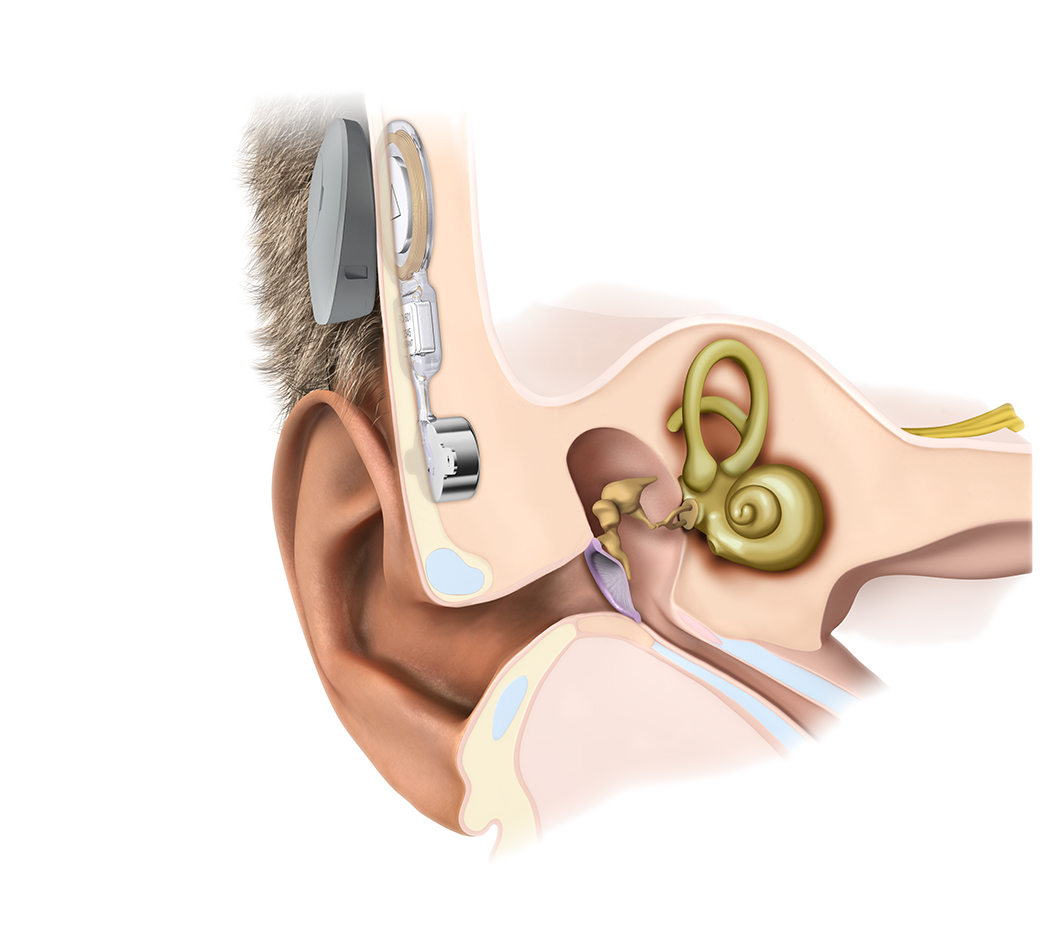Bone conduction hearing devices

The term ‘Bone Conduction Hearing Devices’ is becoming increasingly used instead of Bone Anchored Hearing Aids (BAHA) because of how the technology has improved over the years. Essentially they are the same. A BAHA is the brand name of a manufacturer’s (called Cochlear) device.
This is an alternative to a regular hearing aid for those with problems in their outer or middle ears. It transfers sound by bone vibration directly to the cochlea, bypassing the outer and the middle ear. This means it is useful for conductive and mixed hearing losses. It relies on a working cochlea to send sound to the brain.
Image: Courtesy of MED-EL
How does a bone conduction hearing device work?
This hearing device has two parts: an external part (the ‘processor’) and a surgically implanted fixture placed in the bone behind the ear. There are two types of implant.
- The first is a fixture that protrudes through the skin so that the processor can attach onto it.
- The second is fully implanted under the skin, with the processor attached using a small magnet inside the processor. The diagram below shows the magnet version.
Image: Courtesy of MED-EL
Who can be considered for one?
A bone conduction hearing device may be considered when a conventional hearing aid cannot be worn, (for example due to irritated or collapsed ear canals), or when a hearing aid does not give effective benefit.
Get our e-newsletter
Stay up to date with the latest news, stories and updates from Hearing Link Services and from across the deaf sector.
What can I expect from this device?
A bone conduction hearing device offers amplification without an ear mould in the ear. This makes them more comfortable if you experience discomfort or infections in your ear. Some people also report that they have a more natural sound than conventional hearing aids for the same reason. They do not restore your hearing to normal, but can make managing in everyday situations easier.
They are compatible with hearing loop (telecoil) systems. You can select to pick up sound through the microphone, through the loop, or through a combination of both microphone and loop. This means you can take advantage of assistive listening devices, neckloops or switching to ‘T’ in places displaying the ‘T’ symbol. The bone conduction hearing device processor may have the telecoil feature integrated within it. Otherwise a telecoil accessory can be plugged into the processor when needed.
How a bone conduction hearing device works (Bonebridge)
Courtesy of MED-EL
How an ADHEAR device works
The MED-EL ADHEAR system provides bone-conductive hearing without surgery so is ideal for children too young to undergo implant surgery, or for people with temporary conductive losses.
Courtesy of MED-EL
Webpage updated: April 2024
